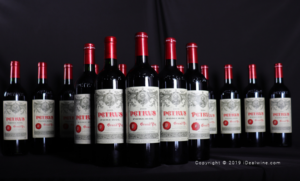
As the age-old adage goes, ‘there’s no such thing as a stupid question’. Some would disagree, I’m sure, but when it comes to wine, nothing is so simple. Besides, it’s always helpful to review the basics. Here, we’ll be looking at the question of why some wines are red, others are white, and some are rosé…or even orange!
Is it grape juice that gives its colour to a wine?
Nope. If you look at the flesh of a grape and the juice it makes, it is usually pale in colour, whatever the shade of its skin. Therefore, the deep red colour we get in the glass isn’t derived from the juice (or ‘must’, as it’s called in the context of winemaking). It’s actually the skin of the grape that gives the wine its colour; this happens when the skins macerate in the juice. Maceration is the transfer of colour, tannins, and aromas that occurs when the skins are left in the grape juice for a period of time. To go a bit further, soluble pigments known as anthocyanines (found in the grape skins) are the main element in this transfer of colour.
Where do the nuances of colour come from?
Even within the categories of each type of wine, there’s a whole range of different colours, ranging from deep purple to water-like transparency.
- Grape variety: The kind of grape used to make a wine has an effect on its eventual colour. The skin of Pinot Noir and Grenache grapes, for example, are less pigmented than those of Syrah or Cabernet Sauvignon. The difference in intensity can be seen clearly in the glass.
- Climate: Whether it’s a red or a white wine, a cooler climate will generally produce a paler colour than a hot environment. However, there are certainly exceptions to this rule, as there are other climate factors at play, including how much the vines face the sun, altitude, the vintage, and even micro-climate.
- Vinification: The stronger the extraction, the stronger the colour. When the wine is developing, the skins can be ‘punched down’ or the liquid ‘pumped over’, both of which get the skins moving in the container. Since this allows more extraction from the skins, the resulting colour tends to be more intense.
- Maturation: Usually, the quicker a wine is bottled, the less intense its colour will be, especially if it doesn’t spend time in a cask/vat first. A wine that ages in a container like this will, however, develop a much richer shade, as the anthocyanines will undergo certain changes; a pale white will take on a deeper or even golden tone, for example. Plus, ageing once bottled will have a similar effect; a red wine with a crimson tone will evolve into a cherry, garnet, tile, or even brown colour.
- Quality: ‘Industrially’ produced wines from large yields are likely to lose their pigmentation after two to four years. However, a wine made with ageing in mind, one of higher quality, can often keep its colour for around a decade or more, and it can even change over time!
Why is rosé wine pink?
You might think rosé is a mix of red and white wine, and you wouldn’t be the only one. However, this is almost never the case. The only place where wine makers have the right to do this is in the Champagne region.
In most cases, rosé comes from the same process as red wine, the difference being that the wine stays in contact with the red skins for much less time. To give you an idea, making a red wine involves macerating the juice with grape skins for 2 to 3 weeks. For a rosé, this maceration lasts around half a day, so the resulting colour is a pale pink rather than a deep red.
There are nuances within this ‘pink’, though, as some rosés have a very clear colour in the glass, whereas others are much more intense, even tending towards a light red. This difference comes partly from the techniques used for making rosé. There are two methods:
- Direct pressing: Black grapes are pressed as soon as they get to the winery, then the juice is vinified as a white wine would be, ie. fermented at a low temperature. The colour is light, the wine fresh and aromatic.
- ‘Saignée’: Black grapes are vinified as a red wine would be, with a maceration in vats, except for much less time. After maceration, some of the juice is removed and fermented elsewhere; the rest is made into red wine. In this case, even the rosé will be more deeply coloured.
Can you make white wine with black grapes?
Yes. If you completely remove the skins, leaving just the juice, this will stay white. This is how champagne can be made, using grape varieties such as Pinot Noir and Pinot Meunier. However, the highest quality appellations always use top white grape varieties for their wines, as these have been cultivated especially for this kind of cuvée.
So, can you make red wine with white grapes?
No. Or rather, you can add a tiny amount white grapes to black grapes but you cannot make a red wine with only white grapes since it’s the skin that makes the colour, you need the grapes to be black/red to make red wine.
White grapes can be used to make orange wine! This happens when the white skins are left in contact with the juice for a longer time, ie. several weeks. Orange wine is a slightly acquired taste, and it isn’t made in every wine region, but it dates back to Antiquity, when wines were aged in amphora pots. And if orange is your lucky colour, you can also find fine sweet wines. Leave these to age for a decade or too and they too will turn orange.
With these basics in mind, you’ll know a bit more about the wine in your glass and how it’s made! Take a look at all the wines we have available here.



